
Battle of Stirling Bridge (First War of Scottish Independence) The Neverwinter Vault
The Battle of Stirling Bridge ( Scottish Gaelic: Blàr Drochaid Shruighlea) was fought during the First War of Scottish Independence. On 11 September 1297, the forces of Andrew Moray and William Wallace defeated the combined English forces of John de Warenne, 6th Earl of Surrey, and Hugh de Cressingham near Stirling, on the River Forth . Background

Battle of Stirling Bridge Wikipedia RallyPoint
Scots attack Once some of the English army had crossed the river, Wallace and Murray ordered the Scottish forces to attack before the rest of the English could cross the bridge. Trapped by the.
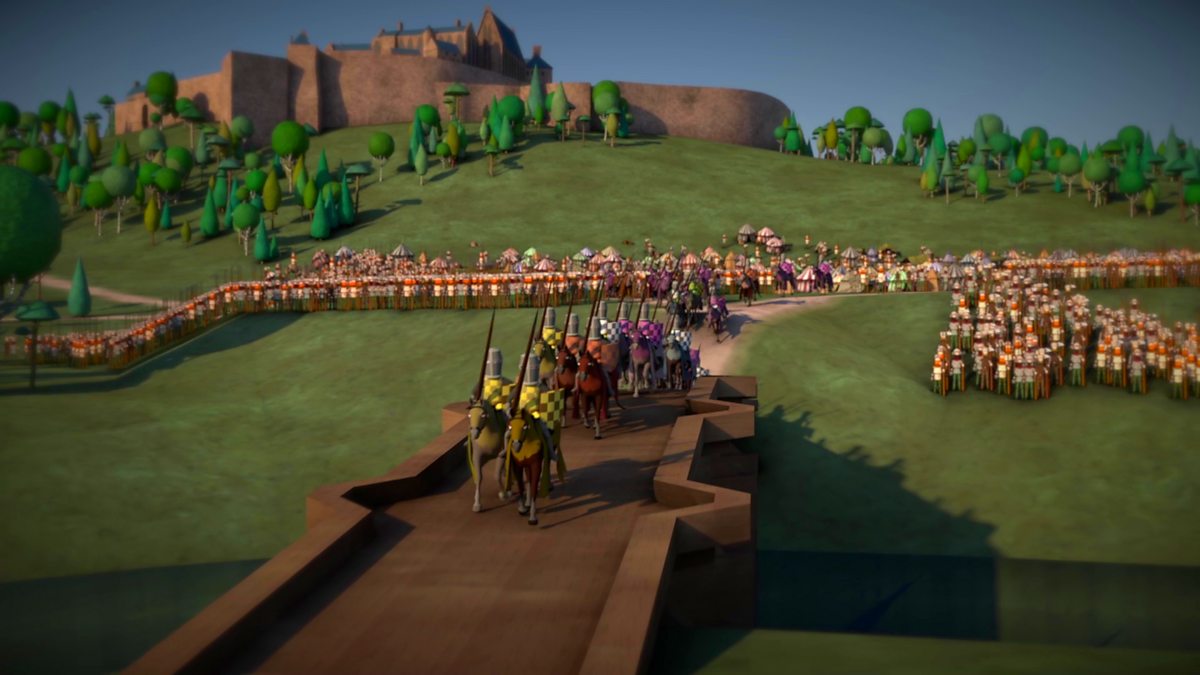
The Battle of Stirling Bridge, 1297 BBC Bitesize
On 11 September 1297, an outnumbered Scottish army defeated the English at the Battle of Stirling Bridge. The most spectacular victory of William Wallace, the Scottish leader depicted in Braveheart (1995), it proved to the embattled Scots that they could drive back the invaders from the south. Though there were setbacks ahead, Stirling Bridge was a key moment in ensuring Scottish independence.

Old Stirling Bridge, Battle of Stirling Bridge, William Wallace Braveheart Battle of stirling
The Battle of Stirling Bridge was part of the First War of Scottish Independence. William Wallace's forces were victorious at Stirling Bridge on September 11, 1297. Armies & Commanders Scotland William Wallace Andrew de Moray 300 cavalry, 10,000 infantry England John de Warenne, 7th Earl of Surrey Hugh de Cressingham

Medium Aevum — The Battle of Stirling Bridge was a battle of the...
Jan. 4, 2024. Maj. Mike Sadler, a World War II navigator on the trackless Sahara of North Africa, who guided Britain's first special forces across sand seas on daring behind-the-lines night.

Battle Stirling Bridge 1297 Andrew Moray William Wallace river Stock Photo, Royalty Free Image
The first War of Scottish Independence kicked off in 1296 in response to King Edward I of England's imposition of overlord status. When Edward's favoured 'puppet' King John Balliol refused to back his military action against the French, the furious English king set forth with his army in March 1296 to sack the then Scottish border town and important trading port of Berwick-upon-Tweed.

Braveheart Battle of Stirling Bridge YouTube
The Battle of Stirling Bridge in 1297 was one of the many battles that made up this war. The Background of the Battle of Stirling The death of the seven-year-old Scottish queen, Margaret, in 1290 left the throne of Scotland vacant. The Scottish lords gave Edward I the task of choosing a new king.
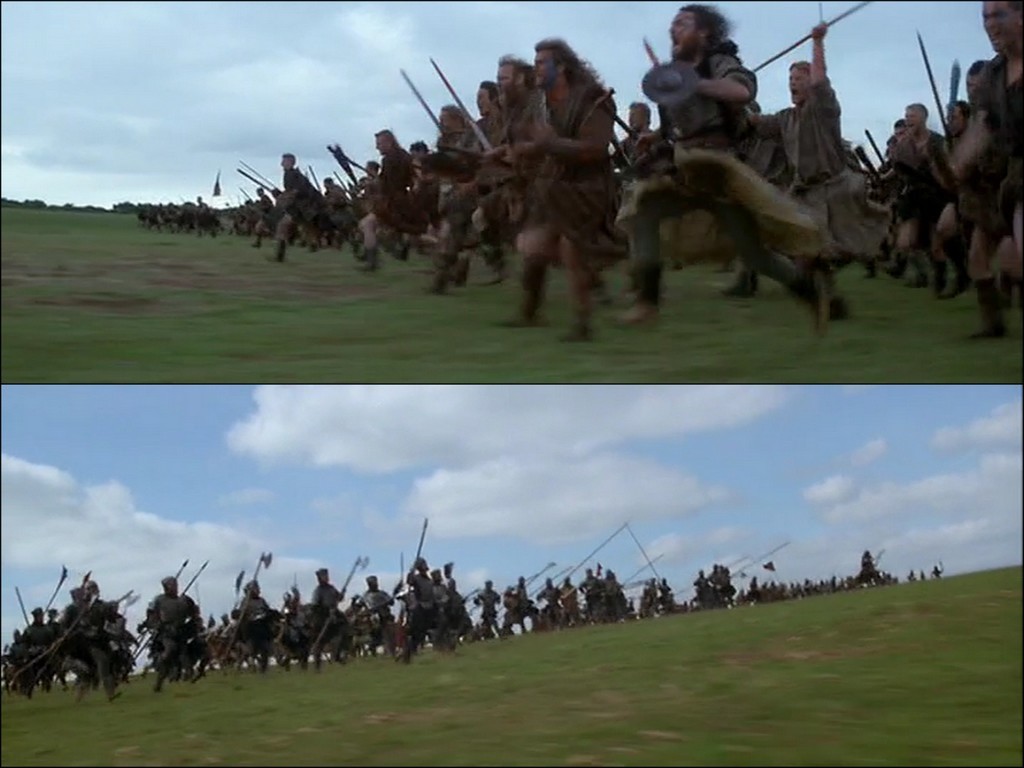
Debunking Braveheart in Stirling Camerons Travels Rick Steves Europe
The Battle of Stirling Bridge has been under the international spotlight since its epic reenactment in the 1995 movie Braveheart. Mel Gibson thankfully never claimed his movie was an accurate depiction of the life of William Wallace and we all know by now that Braveheart is FULL of inaccuracies. So seductively inaccurate is this movie depiction.

The Battle of Stirling Bridge', 11 September 1297, . The Battle of... News Photo Getty Images
The Battle of Stirling Bridge The position and movement of both armies were key factors in the defeat of English forces at Stirling. The slideshow below shows the positions and movements of the.
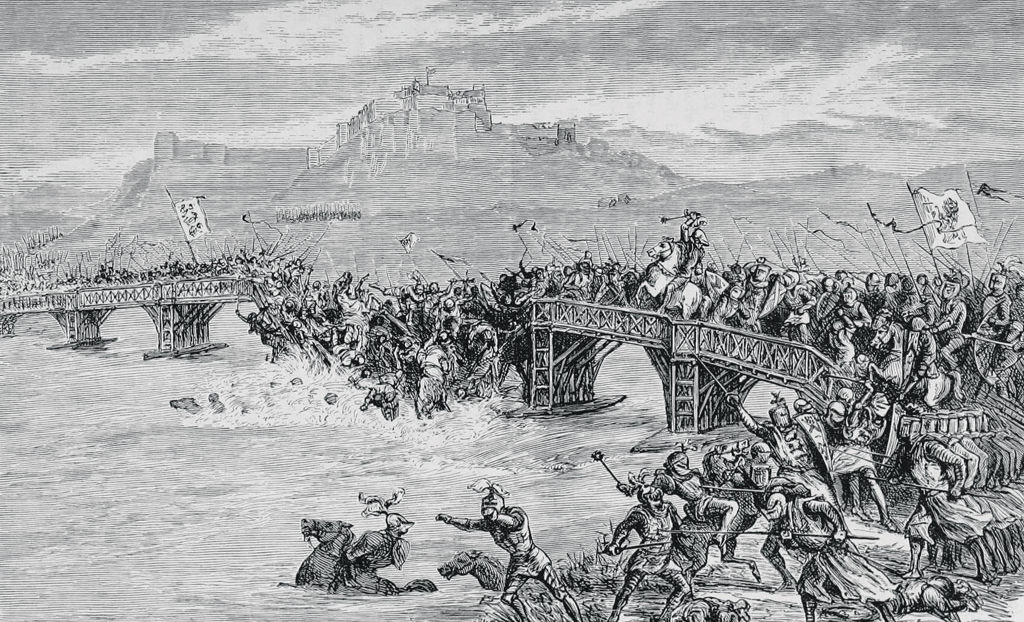
England was defeated by the Scots at the Battle of Stirling Bridge. Credit Atlaspix/Alamy
September 11, 1297 Location: Scotland United Kingdom Stirling Bridge Participants: Scotland England Key People: John John de Warenne, 6th earl of Surrey William Wallace See all related content → Battle of Stirling Bridge, (11 September 1297). The kings of England repeatedly sought to extend their rule north of the border into Scotland.
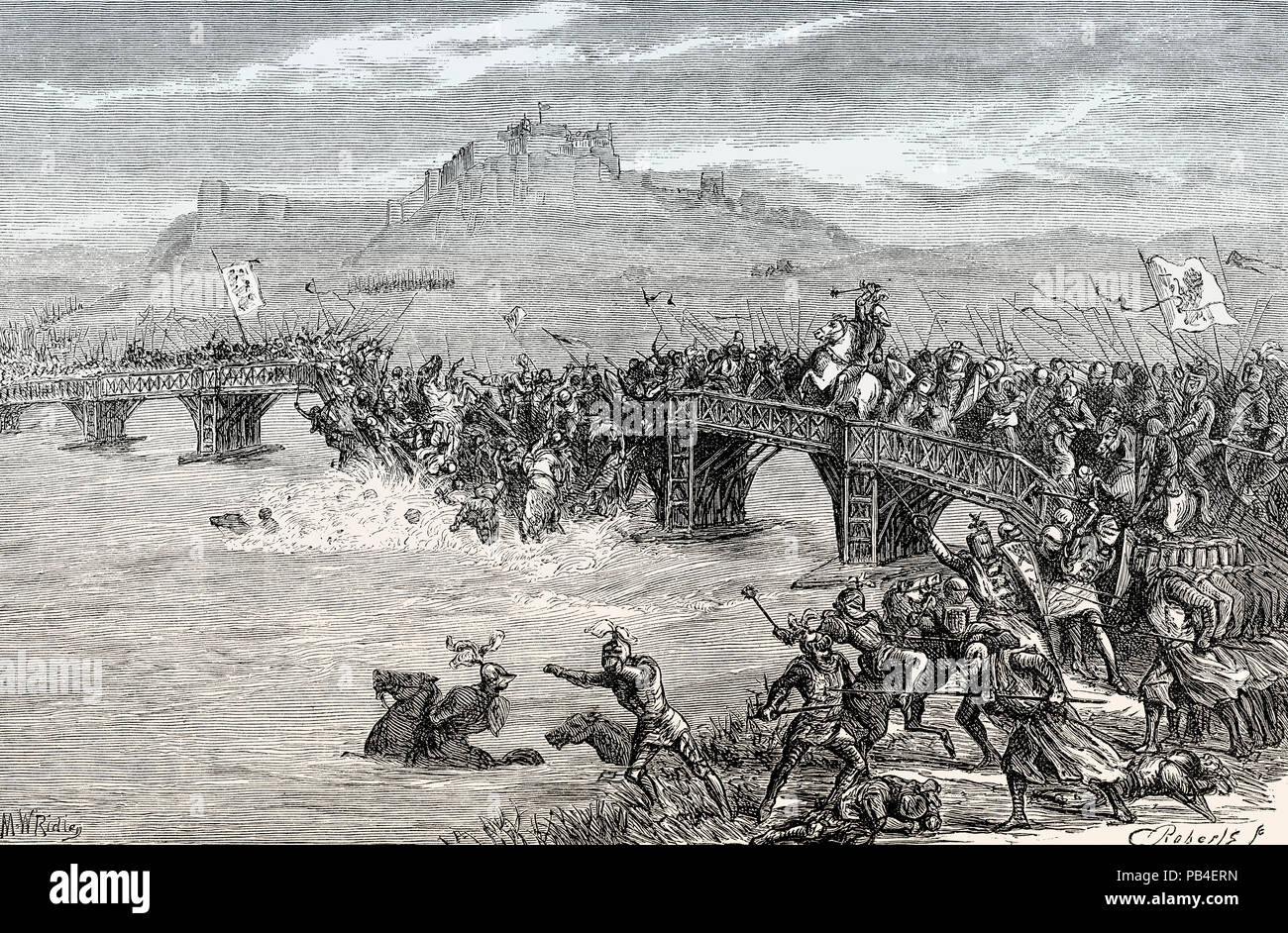
The Battle of Stirling Bridge on 11 September 1297, First War of Scottish Independence, From
Battle of Bannockburn, (June 23-24, 1314), decisive battle in Scottish history whereby the Scots under Robert I (the Bruce) defeated the English under Edward II, expanding Robert's territory and influence. Edward II Edward II, detail of a watercolour manuscript illumination, mid-15th century; in the British Library (Jul. MS. E IV). Stirling Castle

Battle Of Stirling Bridge 1297, Realistic Painting for sale by stevesmith Foundmyself
On 11 September 1297, the force commanded by William Wallace and Andrew Moray faced a strong English army on the outskirts of the town. Scottish preparations Abbey Hill provided an excellent.

Batalla de Stirling Bridge o del Puente Stirling 1.297 Arre caballo!
Battle Background. William Wallace and Andrew de Moray controlled most of northern Scotland by the summer of 1297. Edward I ordered John de Warren to take an army into Scotland and reclaim the territory lost to the rebels. Medieval Stirling was the "Gateway to the Highlands" and provided the only safe crossing point into the north of Scotland.

Battle of Stirling YouTube
Commanders at the Battle of Stirling Bridge: The army of the English King Edward I was commanded by John de Warenne, Earl of Surrey and Sussex and Hugh Cressingham, the Treasurer of the English administration in Scotland. The Scots army was commanded by William Wallace. Size of the armies at the Battle of Stirling Bridge: The English army numbered around 9,000 men.

Battle of Stirling Bridge (First War of Scottish Independence) The Neverwinter Vault
Battle Of Stirling Bridge. and What Led To It. An original historical composition written exclusively for the Scot-Celt-Medieval list. Included on the Clan Wallace Society Internet site with permission. Prologue
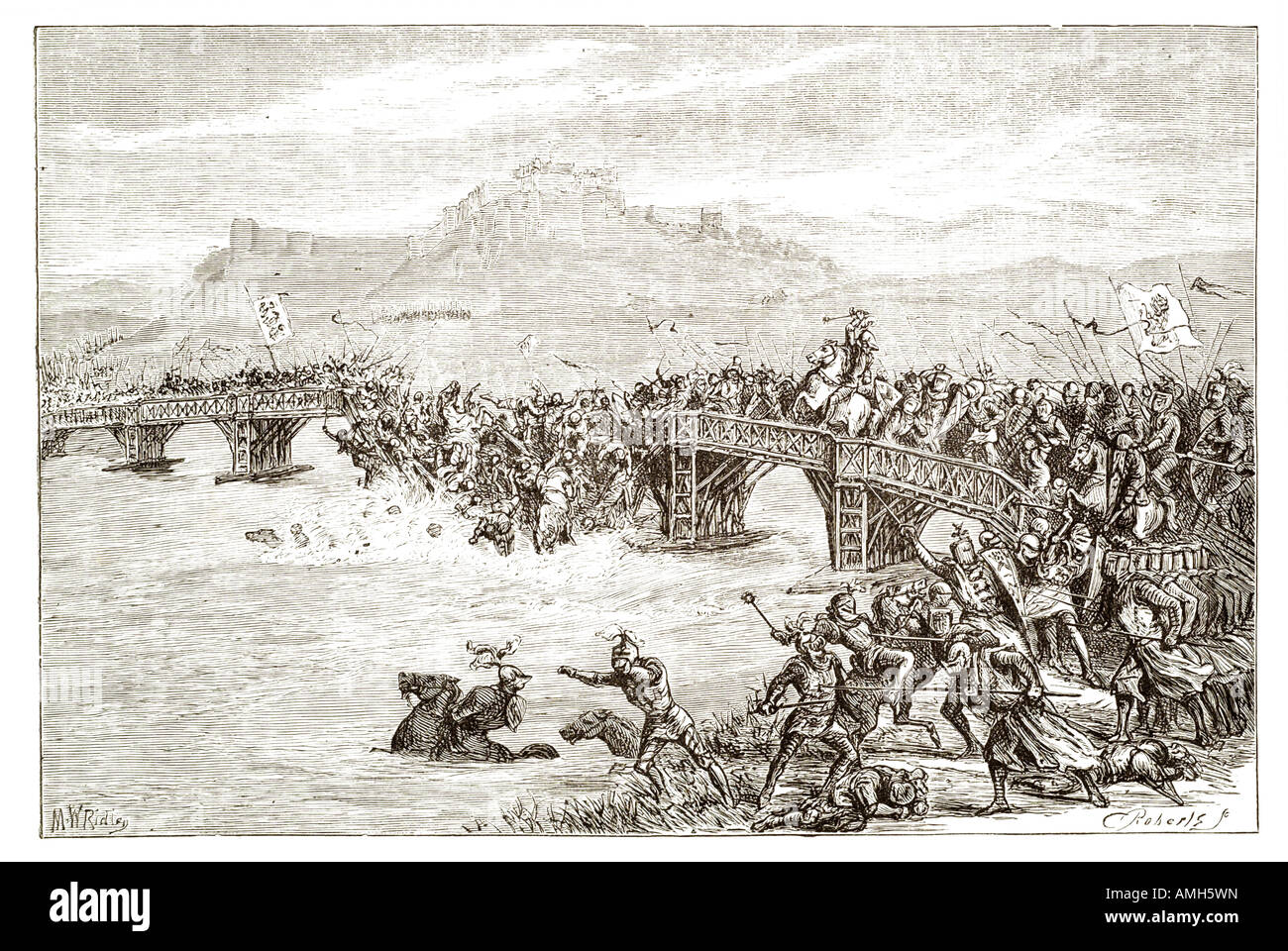
Battle Stirling Bridge 1297 English defeated Scots William Wallace COLLAPSE CASTLE WATER BRIDGE
On 11 September 1297, Scottish forces, under the joint command of Moray and Wallace, met the Earl of Surrey's army, at the Battle of Stirling Bridge. The Scottish army deployed to the north-east of the bridge, and let the vanguard of Surrey's army cross the bridge before attacking. The English cavalry proved ineffective on the boggy ground.